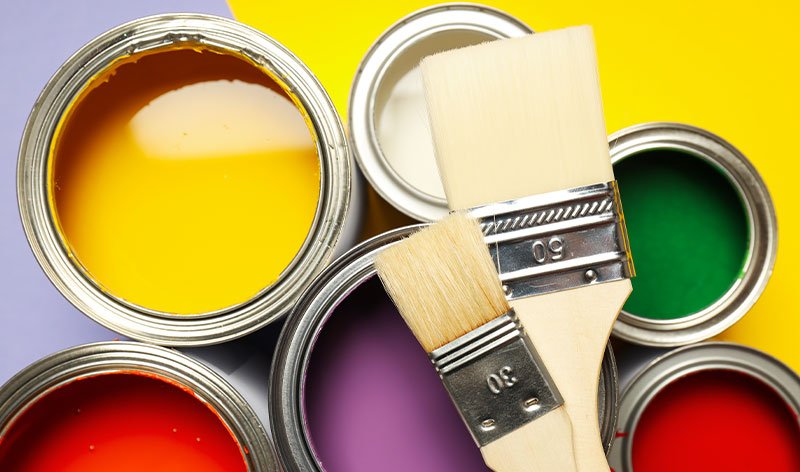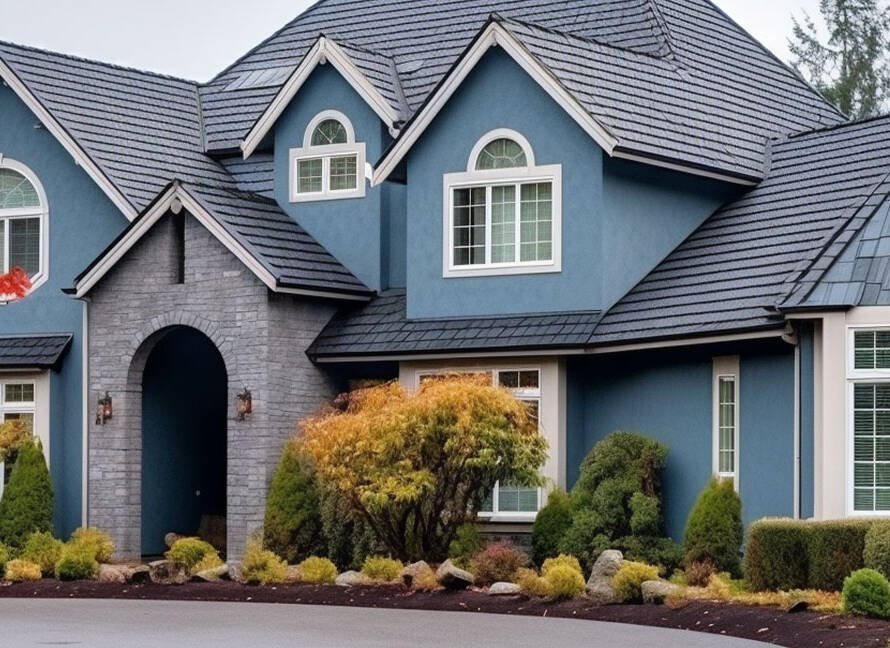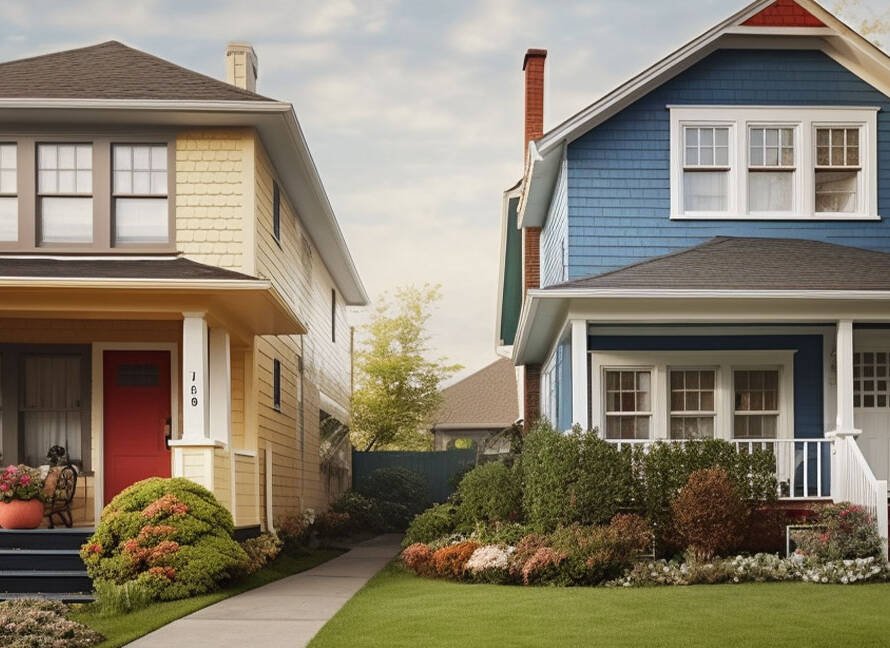When it comes to giving your home a fresh and vibrant look, exterior painting plays a significant role. Whether you’re planning to enhance the curb appeal of your property or protect it from harsh weather conditions, a well-executed exterior paint job can make all the difference. However, one crucial aspect to consider before embarking on an exterior painting project is the cost involved. Understanding the factors that contribute to exterior painting costs can help you plan your budget effectively and ensure a successful outcome. In this article, we will delve into the key elements that influence exterior painting costs, allowing you to make informed decisions for your home.

Table of Contents
- Introduction
- The Size of the Surface Area
- Surface Preparation
- Quality of Paint and Materials
- Number of Coats
- Complexity of the Project
- Accessibility and Safety Measures
- Local Labor Costs
- Additional Services
- Environmental Factors
- Timeframe
- Contractor Selection
- Comparing Quotes
- Maintenance and Longevity
- Conclusion
- FAQs
1. Introduction
Before we delve into the factors affecting exterior painting costs, let’s briefly understand why investing in a fresh coat of paint for your home’s exterior is a worthwhile decision. Exterior painting not only enhances the aesthetic appeal of your property but also acts as a protective barrier against elements like sunlight, rain, snow, and extreme temperatures. By maintaining the integrity of your home’s exterior surfaces, you can prevent damage and extend their lifespan. Now, let’s explore the various factors that influence the cost of an exterior painting project.
2. The Size of the Surface Area
The surface area of your home’s exterior is one of the primary determinants of painting costs. Larger homes require more paint, time, and effort to cover the entire area adequately. Additionally, homes with intricate architectural details, multiple stories, or irregular shapes may require extra attention and resources, resulting in higher costs.
3. Surface Preparation
Proper surface preparation is crucial for achieving a long-lasting and visually appealing paint job. Surface preparation includes activities such as cleaning, sanding, scraping, and filling cracks or holes. The condition of the existing surfaces, including the presence of peeling paint or mold, can significantly impact the time and effort required for preparation. Extensive preparation needs can increase the overall cost of the project.
4. Quality of Paint and Materials
The quality of the paint and materials used directly influences the durability and finish of the exterior paint job. High-quality paints tend to be more expensive but offer better color retention, resistance to fading, and protection against the elements. Investing in superior materials can lead to long-term cost savings by reducing the frequency of repainting.
5. Number of Coats
The number of coats required for your exterior painting project can impact the overall cost. In some cases, a single coat may suffice, while others may necessitate multiple coats for optimal coverage and color saturation. Factors such as the color change (from light to dark or vice versa) and the condition of the existing surfaces can influence the number of coats needed.
6. Complexity of the Project
The complexity of an exterior painting project can vary based on several factors. Projects involving intricate architectural features, decorative elements, or unconventional surfaces require additional time, expertise, and attention to detail. The complexity of the project can contribute to higher labor costs, affecting the overall budget.
7. Accessibility and Safety Measures
The accessibility of your home’s exterior surfaces can impact the cost of the painting project. If certain areas are difficult to reach or require special equipment, such as scaffolding or ladders, additional time and resources will be needed, potentially increasing the overall cost. Moreover, safety measures must be implemented to protect both the workers and the property during the painting process, which can contribute to the expenses.
8. Local Labor Costs
Labor costs vary depending on the location and the expertise of the painting contractors. Areas with a higher cost of living generally have higher labor rates. Additionally, experienced and reputable contractors may charge more for their services. It’s essential to research and compare local labor costs to ensure you receive quality workmanship at a fair price.
9. Additional Services
Certain additional services, such as repairing damaged surfaces, replacing rotting wood, or caulking gaps, may be required before painting. These services are often provided by professional painters but can add to the overall cost. It’s crucial to assess the condition of your home’s exterior and consider any necessary repairs or improvements when estimating the project budget.
10. Environmental Factors
The local climate and environmental conditions can affect exterior painting costs. In areas with extreme temperatures, high humidity, or frequent rainfall, special paints or coatings may be required to ensure durability and longevity. Such specialized products can be more expensive than standard options, impacting the overall cost of the project.
11. Timeframe
The timeframe allocated for the exterior painting project can influence the cost. If you have a strict deadline or require expedited services, some contractors may charge additional fees for working under time constraints. Flexibility in scheduling can help reduce costs, as contractors can work more efficiently and manage their resources effectively.
12. Contractor Selection
The choice of painting contractor can significantly affect the overall cost and quality of the project. Established contractors with a proven track record may charge higher rates due to their expertise and reputation. However, opting for a cheaper but inexperienced contractor can lead to subpar results and potential additional expenses in the long run. It’s important to strike a balance between cost and quality by thoroughly researching and selecting a reputable and skilled contractor.
13. Comparing Quotes
Obtaining multiple quotes from different painting contractors is essential to ensure a competitive price for your project. Comparing the detailed estimates will help you understand the breakdown of costs and make an informed decision. It’s important to carefully review each quote, considering the scope of work, materials, warranties, and any additional services offered.
14. Maintenance and Longevity
Investing in regular maintenance and proper care of your home’s exterior can have a long-term impact on painting costs. By implementing preventive measures, such as regular cleaning, touch-ups, and timely repairs, you can extend the lifespan of the paint job and avoid costly repainting projects in the future.
15. Conclusion
Understanding the factors that influence exterior painting costs is crucial for planning a successful project. The size of the surface area, surface preparation requirements, paint quality, number of coats, project complexity, accessibility, labor costs, additional services, environmental factors, timeframe, contractor selection, and maintenance all play significant roles in determining the overall cost. By carefully considering these factors and obtaining detailed quotes, you can budget effectively and achieve a beautiful and long-lasting exterior paint job for your home.
FAQs (Frequently Asked Questions)
- How long does an exterior painting project typically take? The duration of an exterior painting project can vary depending on factors such as the size of the project, weather conditions, and the complexity of the surfaces. On average, it can take anywhere from a few days to a couple of weeks to complete.
- Can I save money by doing the exterior painting myself? While DIY painting may seem cost-effective, it’s important to consider your skill level and the quality of the outcome you desire. Professional painters have the expertise, tools, and experience to deliver superior results. Inaccurate application or inadequate surface preparation can lead to costly mistakes or the need for repainting in the future.
- What types of paint are recommended for exterior surfaces? High-quality exterior paints that are specifically formulated for outdoor use are recommended. These paints offer better protection against UV rays, moisture, and other environmental factors. Consult with a professional painter or a paint specialist to determine the best paint type for your specific needs.
- How often should I repaint my home’s exterior? The frequency of repainting depends on various factors, including the quality of the previous paint job, the climate in your area, and the type of surfaces. Generally, it’s recommended to repaint every 5 to 10 years to maintain the appearance and protection of your home’s exterior.
- Do exterior painting costs include the cost of materials? Yes, exterior painting costs typically include the cost of materials required for the project. This includes paints, primers, caulking, and other necessary supplies. However, it’s important to clarify with the painting contractor to ensure transparency and avoid any misunderstandings.
Thank you for taking the time to read this article on understanding the factors behind exterior painting costs. By considering these factors and making informed decisions, you can plan and budget effectively for your exterior painting project, ensuring a beautiful and long-lasting result.



